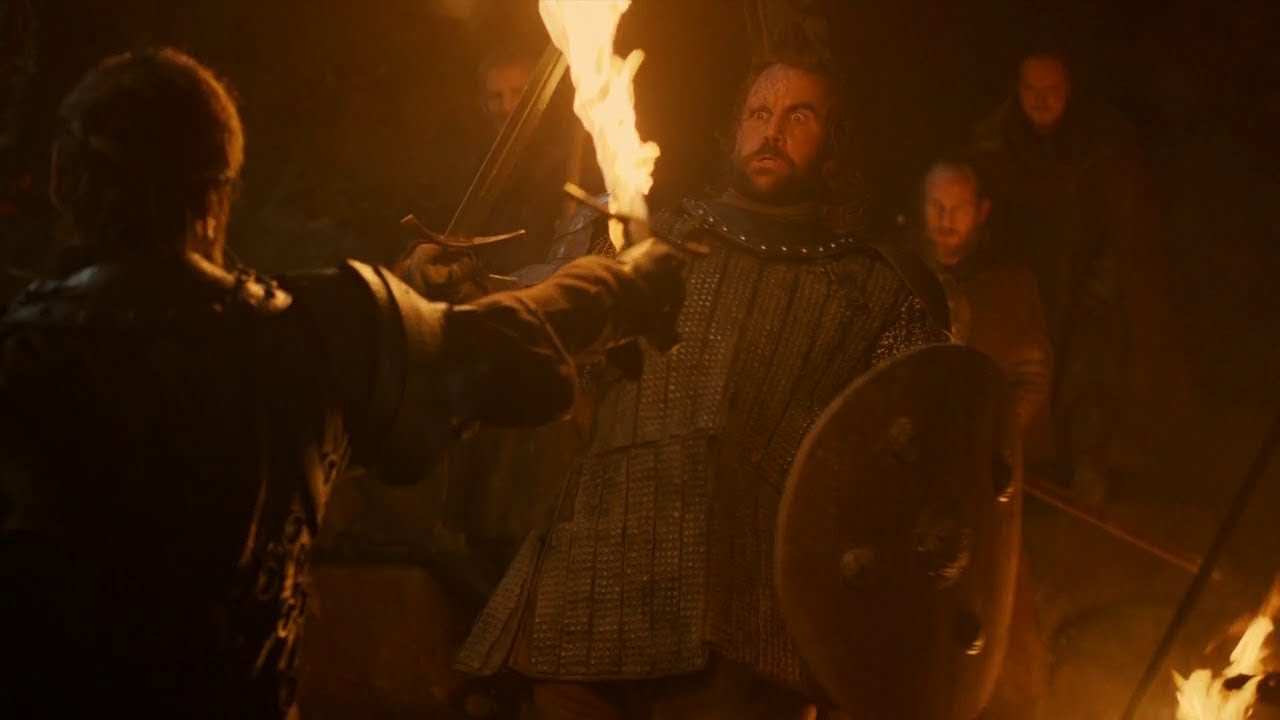I Asked Him What Record It Was, But He Didn’t Know (The Last War in Albion Book Two Part Twenty-Six: Olympus)
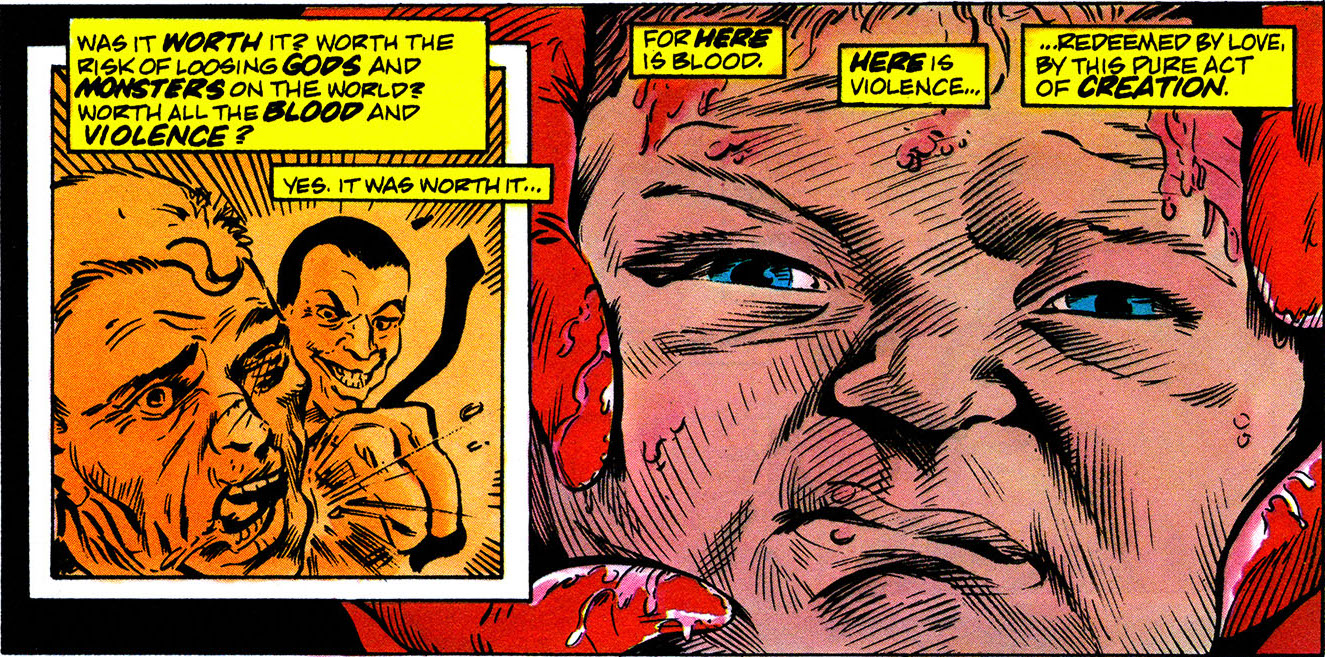 |
| Figure 930: Winter is worth it. (Written by Alan Moore, art by Rick Veitch and Rick Bryant, from Miracleman #9, 1986) |
Previously in The Last War in Albion: After a convoluted series of events, Alan Moore’s Marvelman, now renamed Miracleman, was published in the US by Eclipse, and Moore was writing new material for it, starting with a controversial issue including detailed images of Liz Moran giving birth.
As the sequence reaches its most famous page, it switches structure, the sepia-toned panels becoming insets on the full-color ones instead of the other way around as the baby’s head emerges. “Did it feel like this, when you took the first cell scrapings,” Miracleman asks the absent Gargunza. “Did it feel like this as you watched it divide and replicate; as you hauled me dripping from the tank? The head emerges; a face drawn on a fist. My eyes cannot grasp the fact of it: a head protruding from inside her. It looks so hideous, beautiful, absurd, awesome. But of course. Of course.” And finally, as Miracleman grasps his daughter’s head to finish delivering her, he asks, “was it worth it? Worth the risk of loosing gods and monsters on the world? Worth all the blood and violence? Yes. It was worth it. For here is blood. Here is violence. Redeemed by love, by this pure act of creation.”
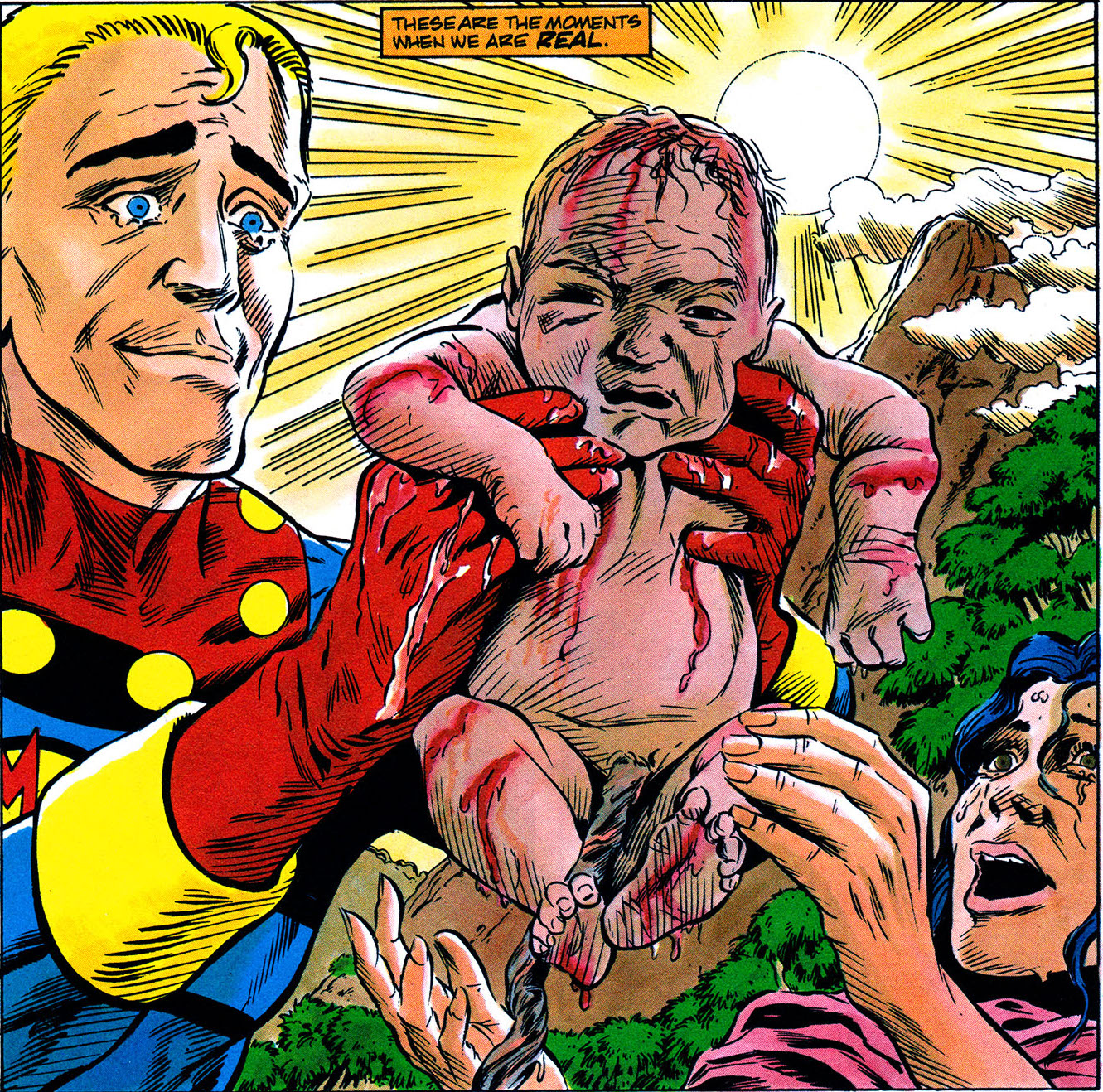 |
| Figure 931: Winter, delivered at last. (Written by Alan Moore, art by Rick Veitch and Rick Bryant, from Miracleman #9, 1986) |
It is, of course, a standard technique for Moore, right down to the heavily iambic flow of the narration. But the content is remarkable. It’s not that Moore hasn’t blended imagery of sex and death before, most obviously in “Rite of Spring,” where the orgasmic unity of all things includes a description of how “my enemy’s blood erupts to fill my mouth with molten copper,” but notes that “there is no contradiction” between this and sexual passion. Or, for that matter, in the description of the “almost sexual hatred” between Miracleman and Kid Miracleman in their early confrontation. But, of course, “Scenes from the Nativity” is not about sex, even though it contains the most detailed depiction of female genitalia to grace Moore’s work prior to Lost Girls. “Rite of Spring” stretched the definition of sex to its widest point, but stayed firmly within the realm of the erotic; “Scenes from the Nativity,” on the other hand, retains all the sense of taboo and sacredness, but strips it down to the most elemental binary, proclaiming that “in the careless and foggy continuum of our lives, these precious moments burn like suns: birth, death… these are the moments when we are real,” the final phrase coinciding with a 2/3 page panel of Miracleman and Liz crying as they hold the just-delivered Winter up to the gleaming sun. And in turn all of this is presented as the true and inevitable teleology of superheroes, with all of the ornately rewritten mythology of Miracleman being framed explicitly as something existing only to lead to this moment.…

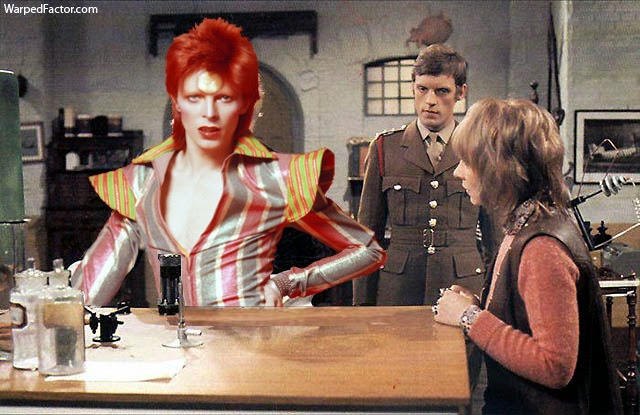 Last War in Albion in the afternoon.
Last War in Albion in the afternoon.
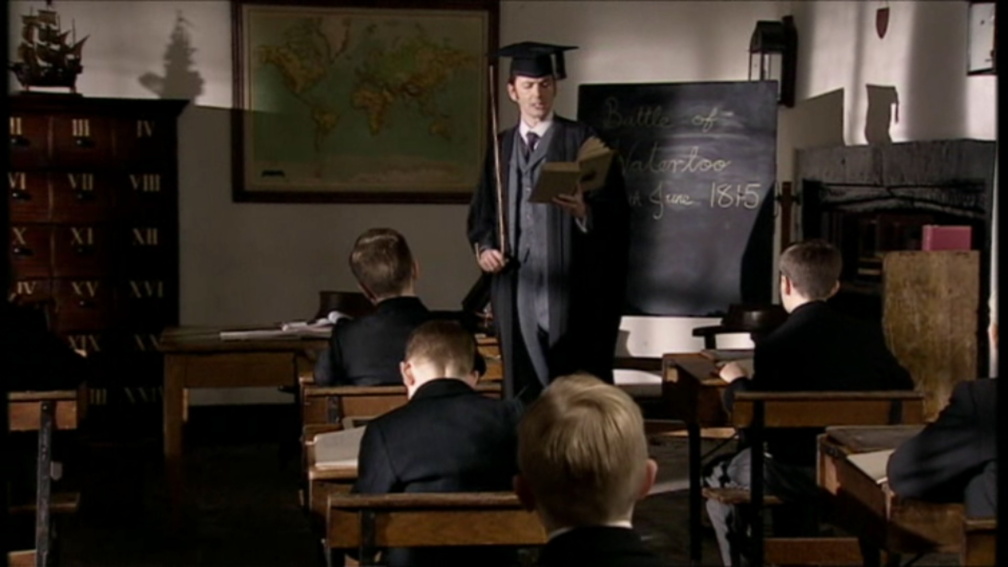 This is actually the third and final part of a series of posts I began in 2012… which is pushing it, even for me.
This is actually the third and final part of a series of posts I began in 2012… which is pushing it, even for me. 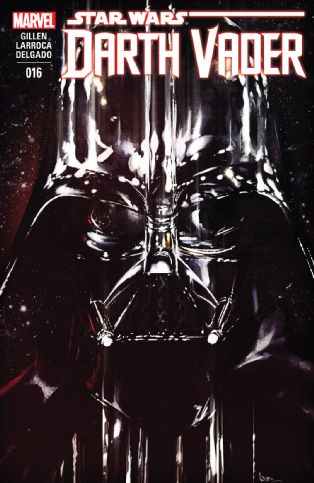 A very Marvel-heavy week, which is helpful in comparing some of the more intermittently frustrating titles in my pulls.
A very Marvel-heavy week, which is helpful in comparing some of the more intermittently frustrating titles in my pulls.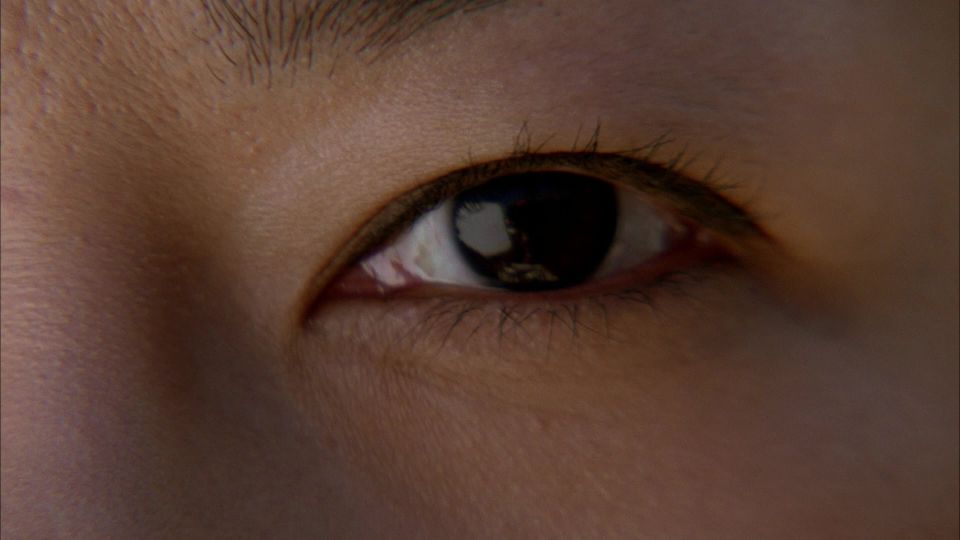 It’s been a while since we had one of these LOST Exegesis posts! So sorry for the delay. It couldn’t be helped. And not just the nearly two months since the last one of these — I had trouble accessing Eruditorum Press last night. Anwyays, enough excuses. It’s been a while. As such, please remember that Part 1 of the essay is spoiler-free. For those who’ve seen the entire series, the second part of the essay, titled “Through the Looking Glass” (and appearing next week in the second part of this massive post), applies foreknowledge to the episode at hand.
It’s been a while since we had one of these LOST Exegesis posts! So sorry for the delay. It couldn’t be helped. And not just the nearly two months since the last one of these — I had trouble accessing Eruditorum Press last night. Anwyays, enough excuses. It’s been a while. As such, please remember that Part 1 of the essay is spoiler-free. For those who’ve seen the entire series, the second part of the essay, titled “Through the Looking Glass” (and appearing next week in the second part of this massive post), applies foreknowledge to the episode at hand.
